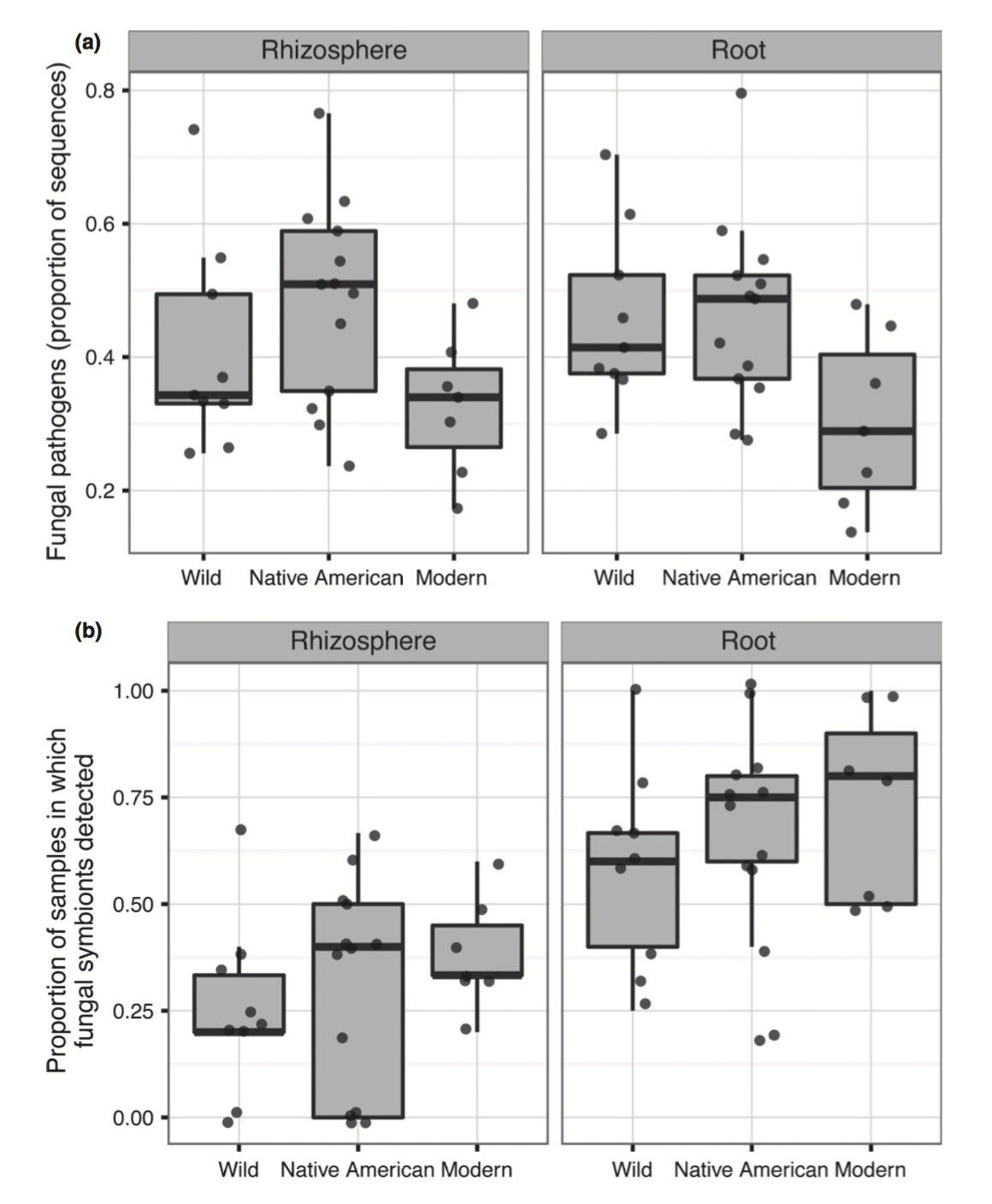Domestication influences fungal community composition of sunflower
Studying the assembly of fungal and bacterial communities on plant roots can help us understand how to manage microbiomes to improve crop health and yields.

Studying the assembly of fungal and bacterial communities on plant roots can help us understand how to manage microbiomes to improve crop health and yields. However, our current understanding of assembly of fungal assembly on plant roots is lacking and furthermore we do not have a good understanding on how plant domestication influence fungal communities. A study published in New Phytologist by Leff et al. (2016) examined how domestication of Helianthus annuus (sunflowers) influenced the assembly of fungal and bacterial communities on roots and if root and rhizosphere communities were influenced by vertical transmission through seeds. Bacterial and fungal root, rhizosphere and seed community structure differed but only fungal community composition, not diversity, differed based on domestication. Putative pathogen abundance was lower in modern strains than in wild strains and the proportion of putative fungal symbionts was lower in the wild ancestors (Figure 1). This suggests that there are important effects of plant domestication events on mycobiome assembly. There was little effect of vertical transmission on the root and rhizosphere fungal communities which suggest that many root endophytes are derived from the rhizosphere.

Source:
- Leff JW, Lynch RC, Kane NC, Fierer N (2016) Plant domestication and the assembly of bacterial and fungal communities associated with strains of the common sunflower, Helianthus annuus. New Phytol. doi: 10.1111/nph.14323



 Print
Print Email
Email

